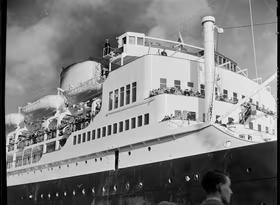Kiwis shifting from cities to the regions
There’s been considerable talk in 2020 about people moving around the country as COVID-19 changes how people live, work, and play. We’ve never had complete and official data on how Kiwis are shifting across New Zealand, but Stats NZ has recently included some net internal migration data which provides a first cut of Kiwis mobility.
Population changes fall into three broad categories: natural increase (births minus deaths), net internal migration (net people from elsewhere in New Zealand shifting to the area) and international migration (net people shifting to an area from outside the country). Chart 1 shows the drivers of population changes by local area in 2020, ranked by net internal migration.
Horowhenua was the area where internal migration contributed greatest to population changes, with 70% of annual population growth coming from internal migration. Thames-Coromandel was second (68%), followed by Selwyn (62%). In all, 11 of 67 areas owed more than half of their population change over the last year to internal migration.
Cities seem to be losing residents
Proportions help to discern some key trends, but the raw number of internal migration flows are also revealing. Auckland might be the gateway to New Zealand, but it’s also an offramp for Kiwis who are deciding it’s time to find somewhere else to go. In 2020, Auckland lost 12,600 residents to other areas, but brought in 36,700 international migrants to make up the loss, plus natural increase of 12,800. Christchurch saw the second largest internal migration outflow (-1,900), followed by Wellington City (-1,400).
Overall, 21 of 66 local areas saw a net outflow of locals to elsewhere. Cities contributed 92% of the declines recorded across the country, with 7 of 13 cities showing an internal migration outflow.
So, who’s luring Kiwis to a new area?
Those looking for a new base of operations are looking across a variety of New Zealand. Selwyn had the largest inflow of internal migration, with a net contribution of 2,100 people. Tauranga City came in second with an inflow of 1,900, followed by Waikato District (1,200), Waimakariri (1,100) and Whāngārei (920).
Looking down the list of areas with the largest net inflow of internal migration does generally show a spread out from urban centres, with areas in Northland, the upper Bay of Plenty, upper Wellington, and mid-Canterbury all well represented.
What’s the focus for those who are shifting?
The way that people are working globally has been shifting over time, and COVID-19 has supercharged this shift in working patterns. Increasing numbers of jobs can be completed remotely from wherever a stable internet connection can be sourced.
Living affordability, primarily housing affordability, is also of clear and rising importance across New Zealand as people examine their circumstances. These two factors are seeing some Kiwis look to shift from urban centres to more provincial parts of the country. These shifts mean that workers can either remote work at an extended distance from the usual office, or so that workers can commute infrequently (a day or so a week) to the office.
New Zealand’s expansive rollout of Ultra-Fast Broadband (UFB), coupled with soaring house prices and an urge by Kiwis to maintain a balanced lifestyle, is set to unlock significant opportunities for regions. Far from zombie towns, regional New Zealand seems to be in the driving seat at present.
The ability to sell a package of remote working facilities, strong links to urban centres, lifestyle options, and cheaper living costs, presents a compelling offer.
Considerable competition is already emerging to attract Kiwis into the regions, but these internal migration figures seem to suggest the shift towards regional centres is well advanced. If you haven’t already, now might be the time to start marketing your area as a sanctuary of work/life balance.
























